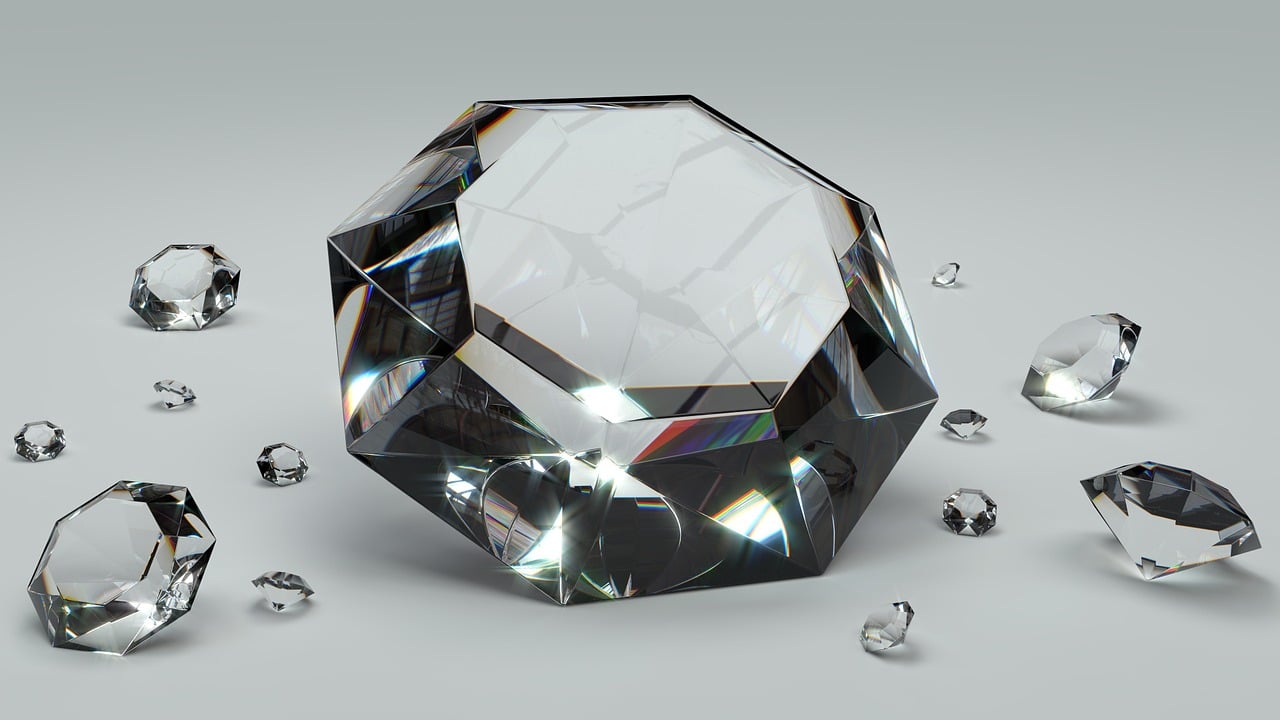
The 4Cs of Diamonds: Cut, Color, Clarity, and Carat Explained
Introduction
Diamonds have long been cherished for their brilliance, durability, and timeless appeal. Whether you're buying an engagement ring, a special piece of jewelry, or investing in diamonds, understanding the 4Cs—Cut, Color, Clarity, and Carat—is essential. These four factors determine the value, appearance, and overall quality of a diamond. In this comprehensive guide, we’ll break down each of the 4Cs in detail and help you make an informed decision when purchasing a diamond.
1. Cut: The Most Important Factor
The cut of a diamond is the most significant factor influencing its brilliance. A well-cut diamond reflects light beautifully, creating the sparkle that diamonds are famous for.
How Cut Affects Brilliance
Diamonds are cut with precise angles and proportions to maximize their light performance. A well-cut diamond allows light to enter, reflect internally, and then exit through the top, creating its brilliance and fire. If a diamond is cut too shallow or too deep, light escapes from the sides or bottom, reducing its sparkle.
Diamond Cut Grades
The Gemological Institute of America (GIA) categorizes diamond cuts into five grades:
Excellent: Maximum brilliance and fire
Very Good: Near-optimal light reflection
Good: Decent sparkle, but some light leakage
Fair: Less brilliance due to improper angles
Poor: Light escapes easily, leading to dullness
Popular Diamond Cuts
Some of the most sought-after diamond cuts include:
Round Brilliant – The most popular and sparkly cut
Princess Cut – A square cut with excellent brilliance
Oval Cut – A sophisticated choice that elongates the finger
Emerald Cut – Step-cut facets for a sleek and elegant look
Cushion Cut – A vintage-inspired, soft-edged square cut
For maximum brilliance, always prioritize cut quality over carat weight.
2. Color: The Shade of Purity
Diamond color refers to the presence of any yellow or brown tint in the stone. The less color a diamond has, the higher its value.
Understanding the GIA Color Scale
The GIA grades diamonds on a D-to-Z scale, where:
D-F – Colorless (highest quality, rarest, and most expensive)
G-J – Near colorless (slightly noticeable tint but excellent value)
K-M – Faint color (noticeable yellow tint, less expensive)
N-Z – Very light to light color (obvious tint, least desirable)
How Color Affects Appearance
Colorless diamonds (D-F) pair best with white gold or platinum settings.
Near-colorless diamonds (G-J) are budget-friendly and still appear white.
Warmer tones (K-M) can look attractive in yellow or rose gold settings.
Pro Tip: The setting and lighting conditions can impact how color is perceived, so always view a diamond in different lighting before purchasing.
3. Clarity: The Diamond’s Internal Purity
Clarity refers to the presence of internal flaws (inclusions) or surface imperfections (blemishes) within a diamond. Most imperfections are microscopic and don’t affect a diamond’s beauty unless they are significant.
GIA Clarity Grading Scale
FL (Flawless) – No inclusions or blemishes visible under 10x magnification (extremely rare)
IF (Internally Flawless) – No internal inclusions, only minor surface blemishes
VVS1-VVS2 (Very Very Slightly Included) – Inclusions are very difficult to detect
VS1-VS2 (Very Slightly Included) – Minor inclusions visible under magnification but not to the naked eye
SI1-SI2 (Slightly Included) – Inclusions visible under magnification and possibly to the naked eye
I1-I3 (Included) – Visible inclusions that affect brilliance and durability
How Clarity Affects Price
Higher clarity diamonds are rarer and more expensive. However, eye-clean diamonds (VS2 or SI1) provide an excellent balance of clarity and affordability without visible flaws.
Pro Tip: Choose a clarity grade where inclusions are not visible to the naked eye to maximize value while saving money.
4. Carat: The Weight of the Diamond
Carat refers to a diamond’s weight, not its size. One carat equals 200 milligrams. Larger diamonds are rarer and more expensive, but carat weight alone does not determine beauty—cut plays a bigger role in a diamond’s sparkle.
Carat Size vs. Visual Impact
0.25 - 0.50 carats: Ideal for subtle, delicate jewelry
0.75 - 1.0 carat: The most popular engagement ring size
1.5 - 2.0 carats: A statement size with significant visual impact
3.0+ carats: Rare, luxurious, and high-value
How Carat Weight Affects Price
Diamonds increase in price exponentially with carat weight because larger stones are rarer. However, slight differences in carat (e.g., 0.90 vs. 1.00) can offer significant savings with minimal visual difference.
Pro Tip: A diamond with an excellent cut will appear larger than a poorly cut diamond of the same carat weight.
How to Balance the 4Cs When Buying a Diamond
Each of the 4Cs plays a role in a diamond’s beauty and value. Here are some tips to help you prioritize:
Prioritize Cut: A well-cut diamond will always look more brilliant, even if it has lower clarity or color.
Consider Near-Colorless Diamonds: G-H diamonds appear almost identical to D-F but cost significantly less.
Opt for Eye-Clean Clarity: A VS2 or SI1 diamond will appear flawless without the high price tag.
Find the Right Carat Balance: A slightly smaller, well-cut diamond can look as large as a bigger one with inferior cut quality.
Conclusion
Understanding the **4Cs of diamonds—Cut, Color, Clarity, and Carat—**is crucial for making an informed purchase. The best diamond for you depends on your budget, personal preferences, and the balance of these four factors. Always choose a GIA-certified diamond to ensure authenticity and quality.
By focusing on cut quality and finding a balance between color, clarity, and carat, you can select a stunning diamond that maximizes beauty and value. Happy diamond shopping!